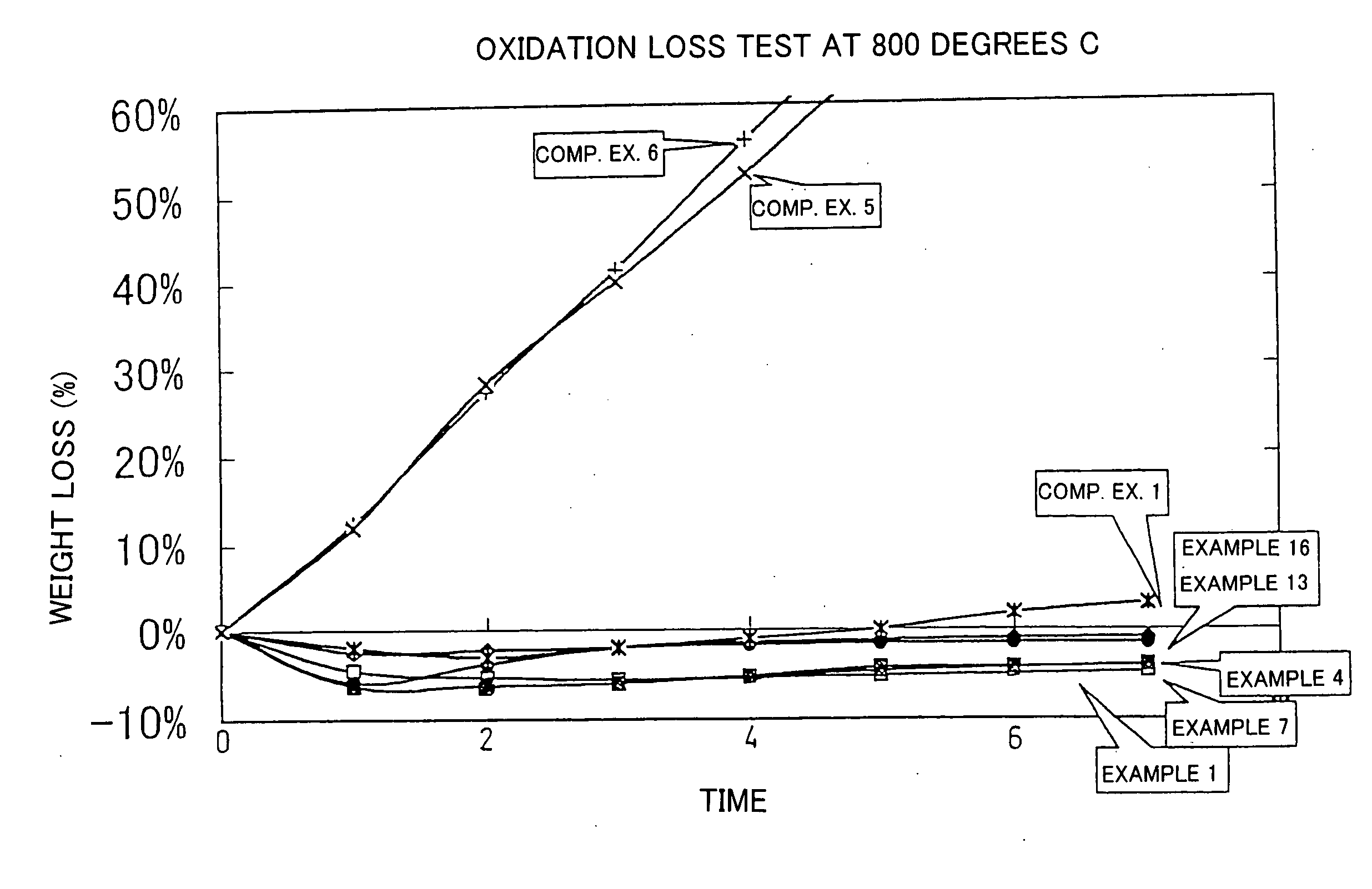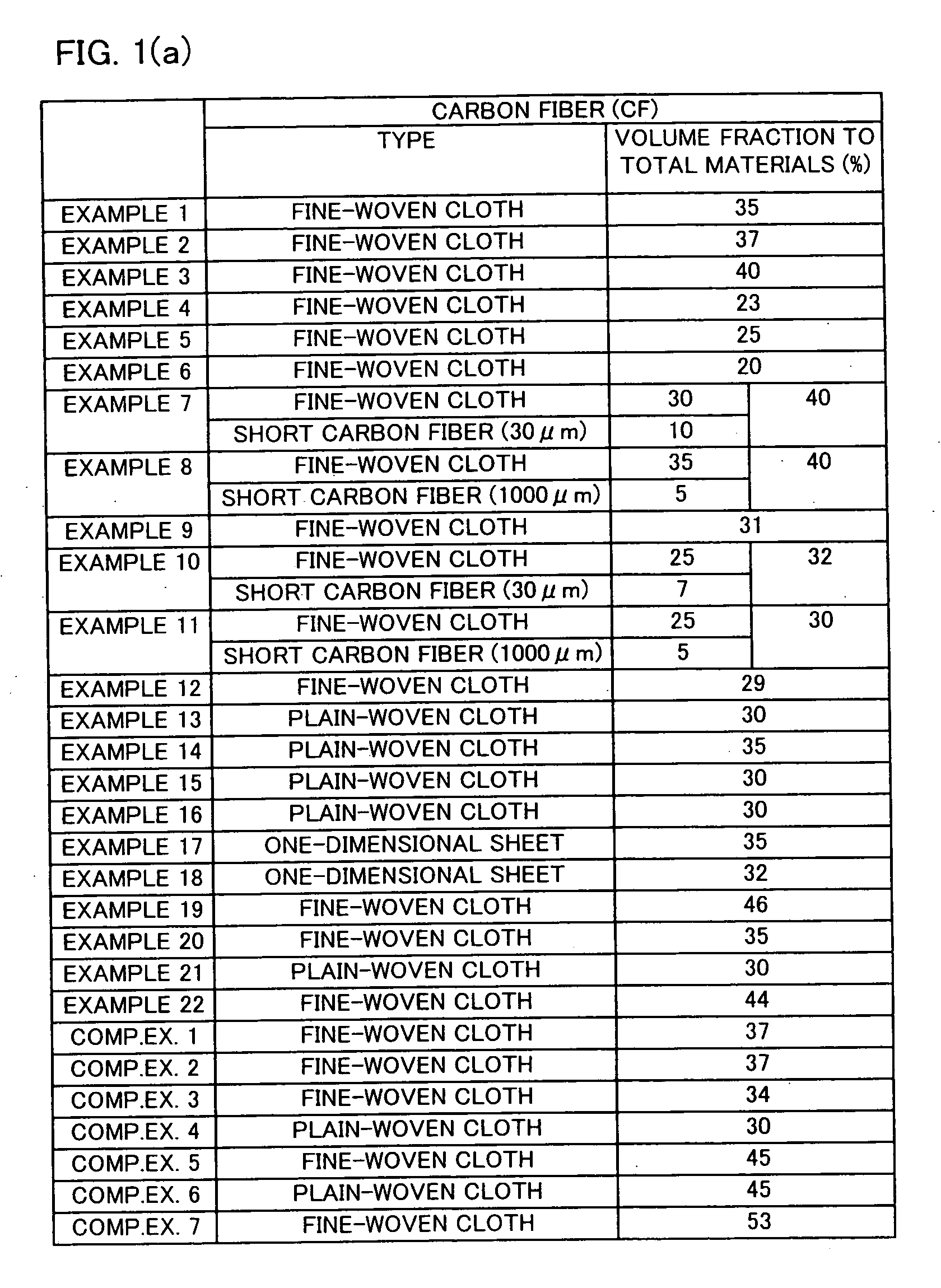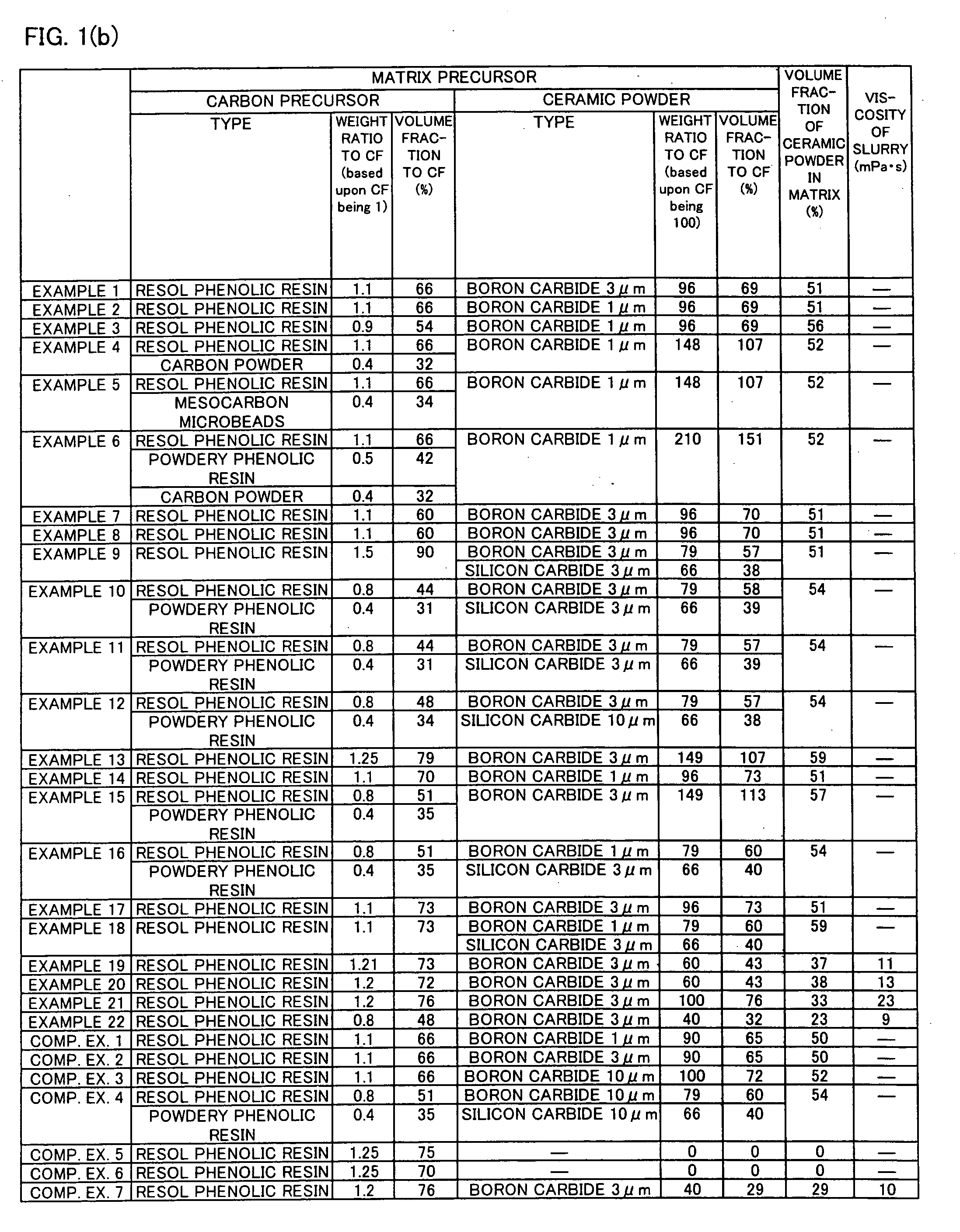Oxidation resistant carbon fiber reinforced carbon composite material and process for producing the same
a carbon fiber reinforced carbon composite material, oxidation resistance technology, applied in the direction of ceramic layered products, transportation and packaging, chemistry apparatus and processes, etc., can solve the problems of increased cost and strength, difficulty in forming oxidation-resistant protective coatings throughout the c/c composite, and difficulty in forming oxidation-resistant protective coatings. , to achieve the effect of improving mechanical characteristics
- Summary
- Abstract
- Description
- Claims
- Application Information
AI Technical Summary
Benefits of technology
Problems solved by technology
Method used
Image
Examples
example 1
[0040] Boron carbide powder having an average particle diameter of 3 μm was added to ethyl alcohol such that a volume fraction of the boron carbide powder in a matrix may be 51 volume %, and then the boron carbide powder was well stirred and dispersed. An amount of the ethyl alcohol used was substantially equal to an amount of synthetic resin to be added in the next step. A resol phenolic resin as a liquid synthetic resin was added thereto at a weight ratio of 1.1 with respect to carbon fibers, and then well stirred and dispersed to be made into slurry, so that a matrix precursor was prepared.
[0041] The slurry was uniformly applied to 2D fine-woven cloths (which are PAN-based ones having a fiber diameter of about 10 μm) using a doctor blade. At this time, in order to infiltrate the slurry into the cloths, this process involved an ingenuity of applying in advance a part of the slurry to the cloths in a rubbing manner and then applying the remaining slurry to surfaces of the cloths. ...
example 2
[0044] A C / C composite was obtained through the same procedure as in Example 1, except that boron carbide powder having an average particle diameter of 1 μm was adopted.
example 3
[0045] A C / C composite was obtained through the same procedure as in Example 1, except that boron carbide powder having an average particle diameter of 1 μm was added such that its volume fraction in a matrix may be 56 volume %, and such that a resol phenolic resin was added at a weight ratio of 0.9 with respect to carbon fibers.
PUM
| Property | Measurement | Unit |
|---|---|---|
| particle diameter | aaaaa | aaaaa |
| viscosity | aaaaa | aaaaa |
| particle diameter | aaaaa | aaaaa |
Abstract
Description
Claims
Application Information
 Login to View More
Login to View More - Generate Ideas
- Intellectual Property
- Life Sciences
- Materials
- Tech Scout
- Unparalleled Data Quality
- Higher Quality Content
- 60% Fewer Hallucinations
Browse by: Latest US Patents, China's latest patents, Technical Efficacy Thesaurus, Application Domain, Technology Topic, Popular Technical Reports.
© 2025 PatSnap. All rights reserved.Legal|Privacy policy|Modern Slavery Act Transparency Statement|Sitemap|About US| Contact US: help@patsnap.com



